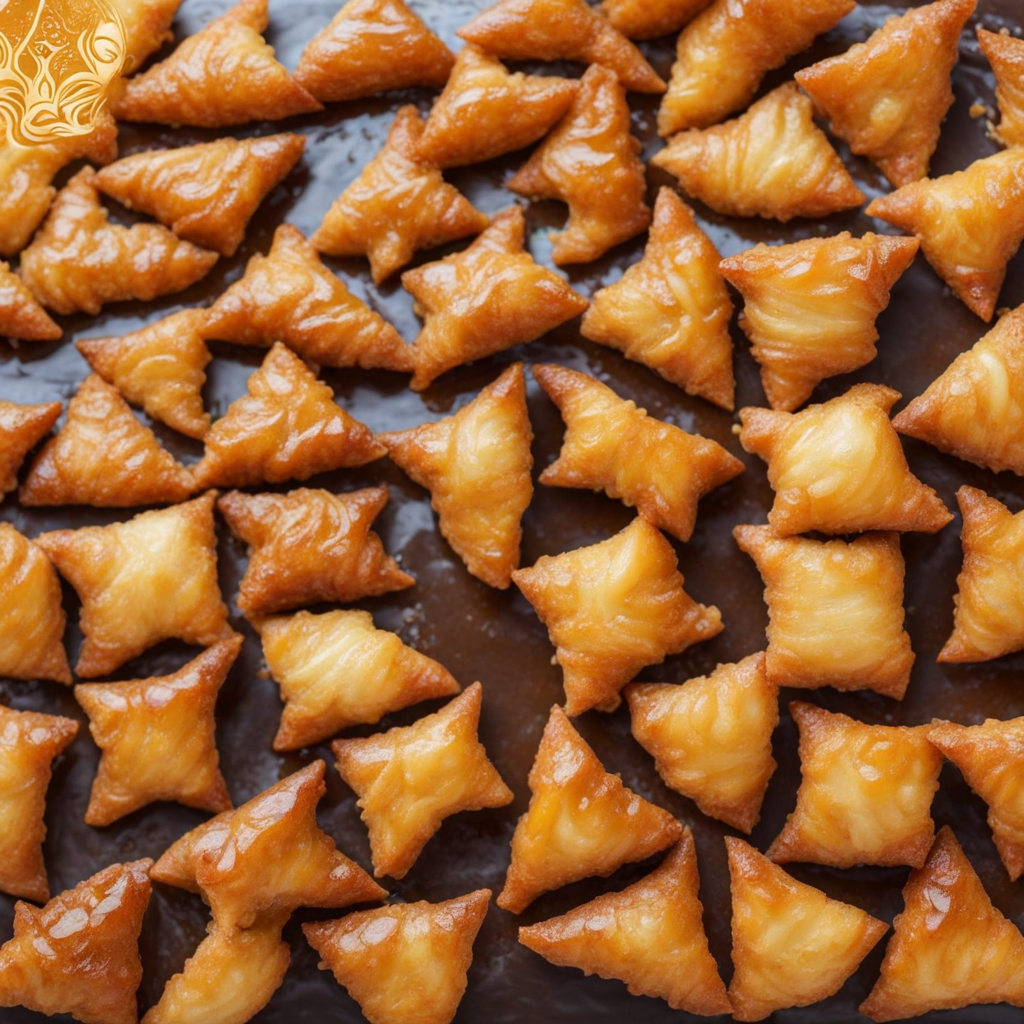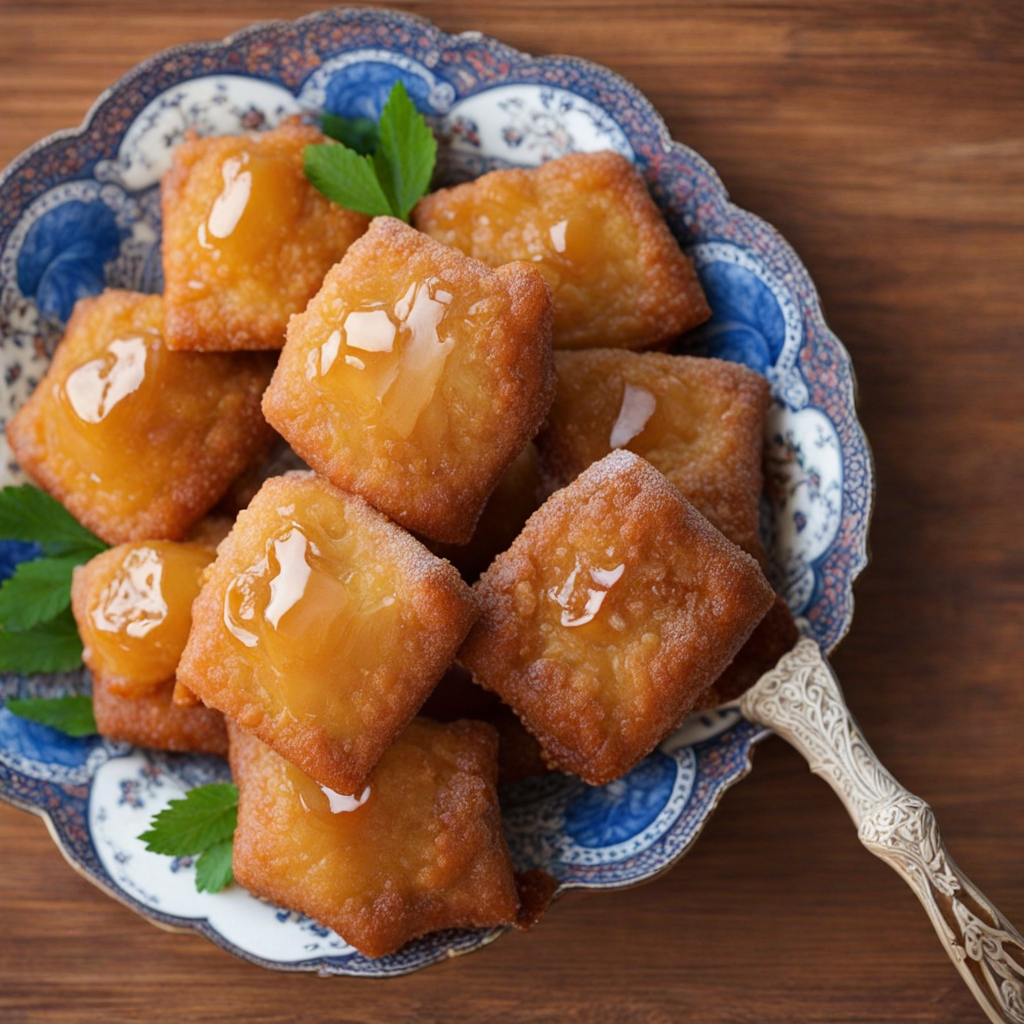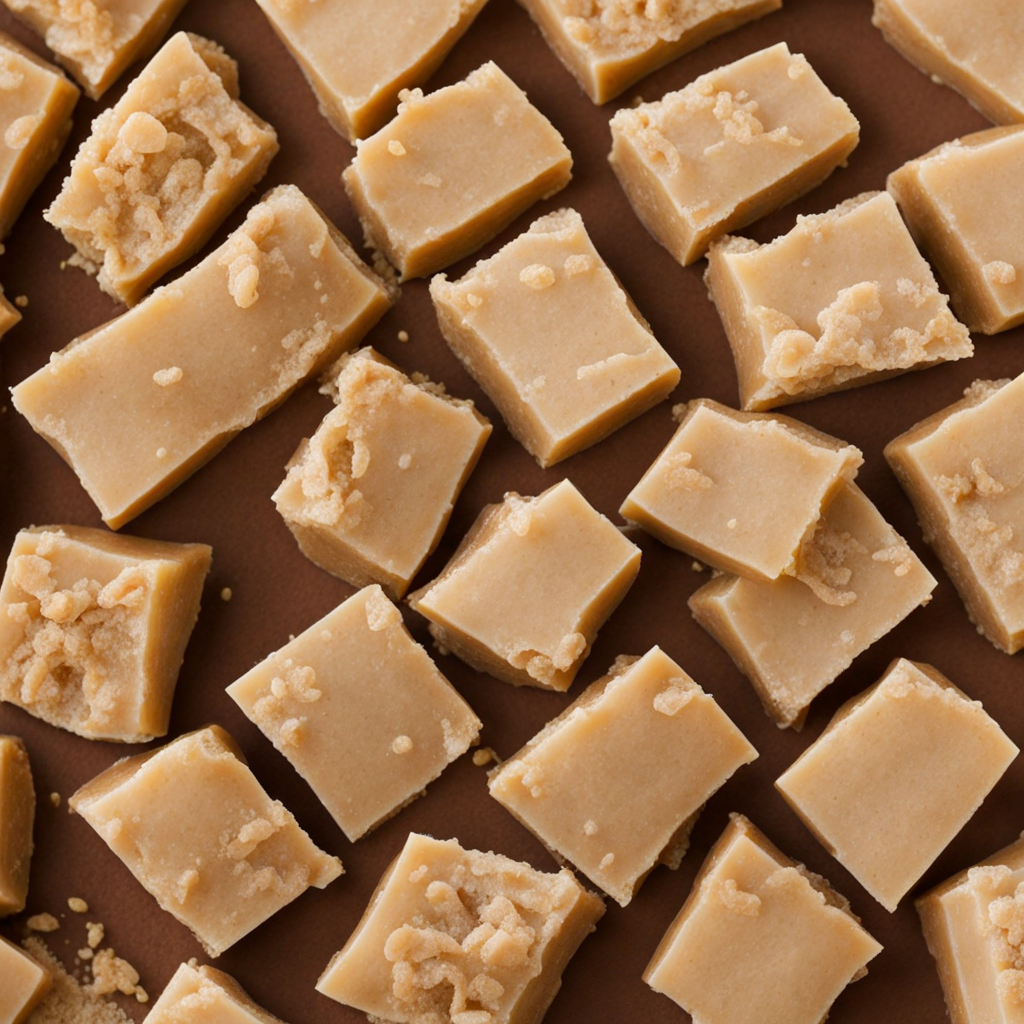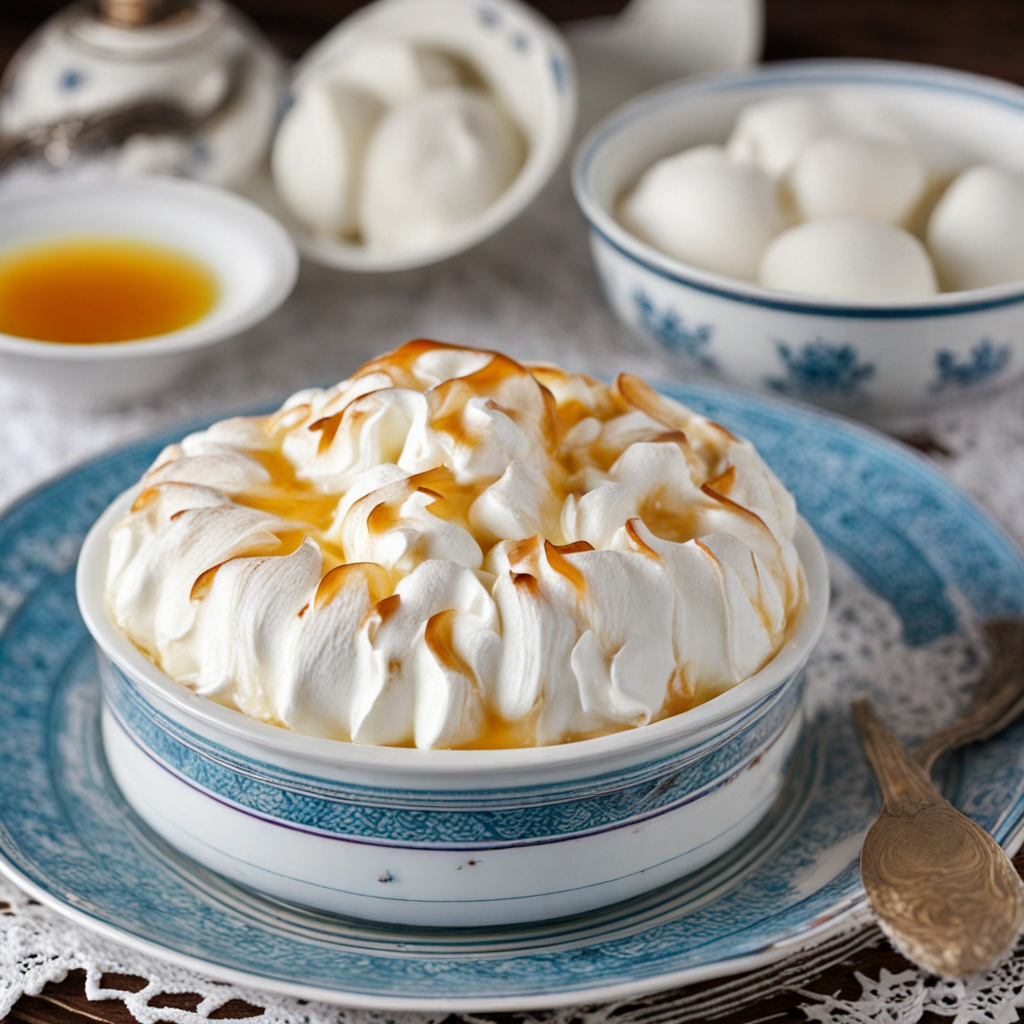Chak-chak
Chak-chak is a delightful and traditional dessert from Uzbekistan, celebrated for its unique blend of flavors and textures. At its core, Chak-chak consists of small, fried dough pieces that are golden and crispy. These bite-sized morsels are typically shaped into irregular forms and then drenched in a sweet syrup made from honey and sugar, giving them a glossy and inviting appearance. The combination of crunchy dough and sticky sweetness creates a satisfying contrast that is hard to resist, making it a beloved treat for both locals and visitors alike. What sets Chak-chak apart is not just its taste but also its presentation. Often served as a centerpiece for festive occasions, it is beautifully arranged on a platter, sometimes garnished with nuts, dried fruits, or sprinkled with sesame seeds. The vibrant colors and appealing textures make it an eye-catching dessert that draws people in. Each bite offers a delightful crunch followed by the rich, sweet flavor of honey, evoking a sense of warmth and comfort that is reminiscent of traditional Uzbek hospitality. As a cultural staple, Chak-chak is more than just a dessert; it embodies the spirit of celebration in Uzbek cuisine. It is commonly enjoyed during weddings, holidays, and gatherings, symbolizing joy and togetherness. For those looking to experience a genuine taste of Uzbekistan, Chak-chak offers a sweet escape into a world of flavors that is both simple and profound, making it a must-try for any adventurous food lover.
How It Became This Dish
The Sweet Journey of Чак-чак: A Culinary Treasure of Uzbekistan #### Origins: A Taste of Tradition Чак-чак (chak-chak) is a delectable dessert deeply rooted in the culinary heritage of Uzbekistan, often regarded as a symbol of hospitality and celebration. While its precise origins remain a topic of discussion among food historians, it is widely believed that chak-chak emerged during the time of the Turkic nomadic tribes, who inhabited Central Asia over a thousand years ago. These tribes relied heavily on the resources of their surroundings, and honey, a natural sweetener, played a crucial role in their diet. The word "chak-chak" itself is derived from the Uzbek language, where "chak" means to "drip" or "to drop," reflecting the method of preparation. The dessert is made by frying small pieces of dough, which are then coated in warm honey syrup. The result is a sweet, crunchy treat that has become synonymous with Uzbek celebration and festivity. #### Cultural Significance: A Symbol of Hospitality In Uzbekistan, food is not merely a means of sustenance; it is an integral part of cultural identity and social interaction. Chak-chak holds a significant place in this context, often served during festive occasions, weddings, and religious holidays. Its golden color and sweet aroma symbolize prosperity, joy, and abundance, making it a favored addition to celebratory tables. The preparation of chak-chak is often a communal activity. Families and friends gather to create this beloved dessert, which fosters a sense of community and togetherness. The act of making chak-chak is akin to storytelling, with each generation passing down their unique recipes and methods. This sharing of culinary traditions reinforces social bonds and strengthens familial ties. Moreover, chak-chak is often presented as a gesture of hospitality to guests. In Uzbek culture, the act of offering food is a sign of respect and honor. When visitors arrive, hosts take pride in presenting chak-chak, signifying that they are welcomed into the heart of the home. This practice is emblematic of the broader cultural values of generosity and warmth that characterize Uzbek society. #### Development Over Time: From Nomadic Roots to Culinary Icon As Uzbekistan transitioned from nomadic lifestyles to settled agricultural societies, the preparation and consumption of chak-chak evolved. The introduction of new ingredients, such as flour and various nuts, expanded the possibilities for this beloved dessert. The recipe began to adapt to the availability of local produce, with variations incorporating almonds, walnuts, or even dried fruits, reflecting the rich biodiversity of the region. The rise of the Silk Road further influenced the development of chak-chak. The ancient trade route connected diverse cultures, facilitating the exchange of ingredients and culinary techniques. As merchants traveled through Uzbekistan, they encountered chak-chak and carried tales of its sweetness back to their homeland. This cross-cultural exchange enriched the dessert's profile, allowing it to adapt and flourish. By the late 19th and early 20th centuries, chak-chak had become a staple at Uzbek celebrations and gatherings. It was during this period that the dessert gained popularity beyond local borders. As Central Asian cuisine began to gain recognition on the global stage, chak-chak emerged as a symbol of Uzbek culinary heritage. It was a point of pride for Uzbeks, who sought to showcase their rich traditions to the world. #### Modern-Day Chak-Chak: A Culinary Legacy In contemporary Uzbekistan, chak-chak continues to retain its cultural significance while also embracing modern influences. The dessert is available in various forms, from traditional homemade versions to commercially produced varieties found in bakeries and markets. While the basic recipe remains unchanged, innovative chefs are experimenting with flavors, textures, and presentations, creating new interpretations that appeal to younger generations. Chak-chak has also found its way onto international culinary scenes, introduced by Uzbek diaspora communities. Food festivals and cultural events celebrate this traditional dessert, allowing people from diverse backgrounds to appreciate its unique flavors and rich history. As globalization continues to shape food culture, chak-chak serves as a bridge between the past and the present, connecting generations through a shared love for this sweet delicacy. In recent years, the importance of preserving traditional food practices has prompted initiatives to promote chak-chak and other local dishes. Culinary schools and workshops are teaching the art of making chak-chak, ensuring that the next generation understands its cultural significance and the techniques involved in its preparation. This emphasis on culinary heritage empowers local communities to take pride in their gastronomic traditions. #### Conclusion: The Sweet Legacy of Chak-Chak Chak-chak is more than just a dessert; it embodies the spirit of Uzbekistan's rich cultural tapestry. From its nomadic origins to its status as a culinary icon, chak-chak reflects the resilience and adaptability of Uzbek cuisine. It is a testament to the power of food as a connector of people, a marker of community, and a celebration of heritage. As the world continues to change, chak-chak remains a delicious reminder of the importance of tradition and the joy of sharing food with loved ones. Whether enjoyed at a festive gathering, a simple family meal, or a special occasion, chak-chak serves as a sweet link to Uzbekistan's past and a cherished part of its culinary future. In every bite, one can taste the history, the culture, and the warmth of hospitality that defines this beloved dessert.
You may like
Discover local flavors from Uzbekistan







